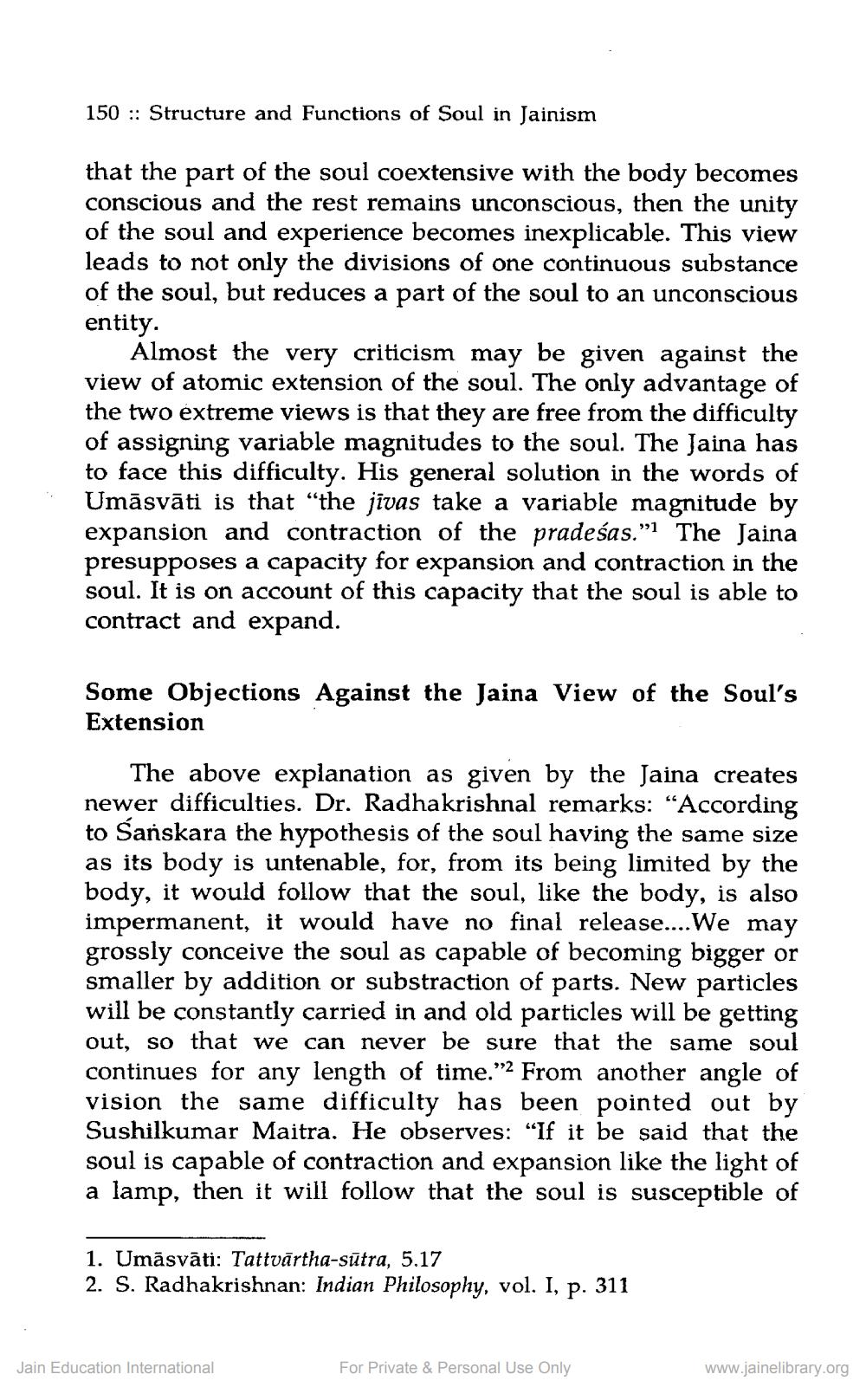________________
150 Structure and Functions of Soul in Jainism
that the part of the soul coextensive with the body becomes conscious and the rest remains unconscious, then the unity of the soul and experience becomes inexplicable. This view leads to not only the divisions of one continuous substance of the soul, but reduces a part of the soul to an unconscious entity.
Almost the very criticism may be given against the view of atomic extension of the soul. The only advantage of the two extreme views is that they are free from the difficulty of assigning variable magnitudes to the soul. The Jaina has to face this difficulty. His general solution in the words of Umāsvāti is that "the jivas take a variable magnitude by expansion and contraction of the pradesas." The Jaina presupposes a capacity for expansion and contraction in the soul. It is on account of this capacity that the soul is able to contract and expand.
Some Objections Against the Jaina View of the Soul's Extension
The above explanation as given by the Jaina creates newer difficulties. Dr. Radhakrishnal remarks: "According to Sanskara the hypothesis of the soul having the same size as its body is untenable, for, from its being limited by the body, it would follow that the soul, like the body, is also impermanent, it would have no final release....We may grossly conceive the soul as capable of becoming bigger or smaller by addition or substraction of parts. New particles will be constantly carried in and old particles will be getting out, so that we can never be sure that the same soul continues for any length of time." From another angle of vision the same difficulty has been pointed out by Sushilkumar Maitra. He observes: "If it be said that the soul is capable of contraction and expansion like the light of a lamp, then it will follow that the soul is susceptible of
1. Umäsvāti: Tattvartha-sutra, 5.17
2. S. Radhakrishnan: Indian Philosophy, vol. I,
P.
Jain Education International
For Private & Personal Use Only
311
www.jainelibrary.org




